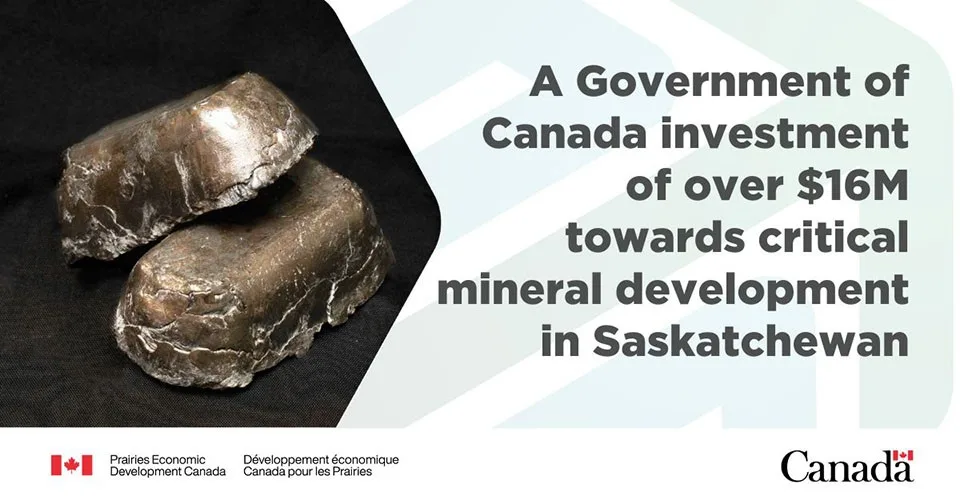Saskatoon – Saskatchewan is internationally known for mining and exploration, and more recently getting recognition for critical minerals, including rare earth elements, which are used in electric vehicles (EVs), wind turbines, everyday electronics, and industrial uses. As the demand for critical minerals to power the clean economy is expected to double by 2030, according to the International Energy Agency, there is an enormous economic opportunity for Saskatchewan and for Canada to seize. Since 2020, the Saskatchewan Research Council (SRC) has taken the lead in processing and commercializing value-added products using rare earth elements throughout the development of its Rare Earth Processing Facility in Saskatoon, the first of its kind in Canada.
Jonathan Wilkinson, Minister of Energy and Natural Resources, on behalf of Dan Vandal, Minister of PrairiesCan, announced new funding of over $16 million to support SRC in Saskatoon, Saskatchewan. This funding builds on earlier support of nearly $13.5 million from PrairiesCan and Natural Resources Canada (NRCan) for SRC to establish its Rare Earth Processing Facility and develop new rare earth mineral processing technologies.
Today’s announcement includes $15.96 million through PrairiesCan to enable SRC to acquire bastnaesite (a type of ore containing rare earth elements) from Canadian sources and create new domestic capacity for bastnaesite processing, which will be integrated into SRC’s Rare Earth Processing Facility. SRC will process bastnaesite ore acquired from Vital Metals Ltd.’s Canadian operations to produce a mixed rare earth product, which will be further processed using SRC’s solvent extraction and metal smelting technology to produce rare earth metals. SRC will also collaborate with a local educational institution to develop and deliver a training program for Indigenous students to operate bastnaesite processing equipment.
The investment of $209,330 from NRCan, under the Critical Minerals Geoscience Data (CMGD) Initiative will help SRC create a publicly available database of mineral characteristics, which will expand the understanding of critical mineral deposits in Canada and reduce mining waste. The new data will help make better predictions about the types of deposits that can be identified by sensor-based sorting, reducing the costs of developing critical mineral deposits into mines and the energy consumption and waste associated with these mines.
The Government of Canada, through the Canadian Critical Minerals Strategy, is making crucial investments in critical minerals, and seizing the economic opportunity the clean economy presents for Saskatchewan and for Canada – in line with our goal to become a critical minerals supplier of choice for the democratic world and create good jobs and economic opportunities for generations to come.
“Our government is investing in the economic opportunities presented by our critical minerals wealth, ensuring that Canadians will benefit from the mining, processing and sale of rare earth elements and other critical minerals through the creation of good jobs, expansion of the mining sector, and prospects for future innovations and reduced emissions.” – Jonathan Wilkinson, Minister of Energy and Natural Resources
“Investing in regional strengths like mining, exploration, and mineral processing helps us build a solid path to a strong sustainable future for all Canadians. Saskatchewan Research Council’s Rare Earth Processing Facility plays an important role in our government’s plan to establish a domestic rare earth supply chain that grows our economy and creates good jobs for Canadians.” – Dan Vandal, Minister responsible for PrairiesCan








